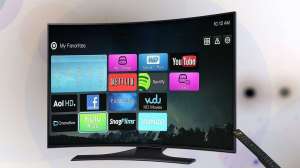If you want help planning or producing this work, our team at Foonster Services builds clear, sustainable video programs. Strategy first, then repeatable operations.
Creators vs. Brands on YouTube
Creators win because they build audiences, not ad impressions. Brands can do the same with a mindset shift.
A Useful Pattern: Education First, Promotion Second
Educational content earns trust. Then product news lands naturally.
Four Pillars of an Organic Video Program
These pillars keep the work simple, repeatable, and measurable.

Audience First
Define one primary viewer. Clarify the promise of your channel in a sentence. Build formats that deliver that promise every week.

Format Planning
Think like TV. Pick episode lengths and show types. Name them. Consistency beats novelty when you are building a habit.

Repurposing System
Cut each long episode into shorts. Write hooks and overlays. Publish vertical clips to drive back into full episodes.

Measurement & Ops
Track view velocity, retention, and releases per month. Improve the show, not just the thumbnail.
Shorts and Long-Form: Work Them Together
Shorts help discovery. Long-form builds depth. Use both on a single content plan.
Data That Actually Helps
Keyword volume on YouTube is noisy. Use view velocity and pattern checks.
YouTube Is TV Again
More viewing now happens on a television. That changes the craft.
Where AI Fits
AI expands creative range. Cameras still win on authenticity.
Video Strategy FAQs
Why do brands lag behind creators on YouTube?
Most brands still treat YouTube like TV and expect quick ROI. Creators build shows, nurture audiences, and play the long game. Brands can close the gap by naming a host, defining one clear promise, publishing on a schedule, and giving the channel time to compound. Measure show health, not only campaign spikes.
How should we mix shorts and long-form video?
Use long-form to deliver depth and trust. Cut shorts as trailers and highlights that push viewers to full episodes. Write tight hooks, burn-in captions, and post vertical clips to feeds. This approach preserves substance while multiplying reach. It also simplifies planning because shorts are cut from the same source.
What metrics beat keyword volume for YouTube research?
Keyword volume is noisy. Instead, use monthly median view velocity to estimate real demand. Then review the top videos to spot consistent styles, pacing, and hosts. This tells you the audience’s visual language. Use it to guide format decisions while still leaving room for a unique angle that fills a visible gap.
How does TV viewing change our production approach?
More viewing now happens on a television. Prioritize audio quality and legibility at a distance. Think in TV formats with clear acts and chaptering. Use bolder titles and cleaner frames. If it looks and sounds good on a TV, it will also work on mobile. The reverse is not guaranteed, especially for sound.
Where does AI video fit versus live camera work?
AI expands creative options for abstract visuals, concept sequences, and animated moments that once needed big budgets. It does not replace on-camera authenticity. Keep hosts, interviews, and real demos grounded in live capture. Blend AI where it adds clarity or delight. Use judgment, not hype, as your filter.
What is a simple 90-day plan to start?
Month 1: pick a primary viewer, name the channel promise, define one weekly show, and select a host. Month 2: produce four episodes and build a clip pipeline. Month 3: improve audio and retention, then standardize a dashboard for view velocity, retention, and release cadence. Keep going.